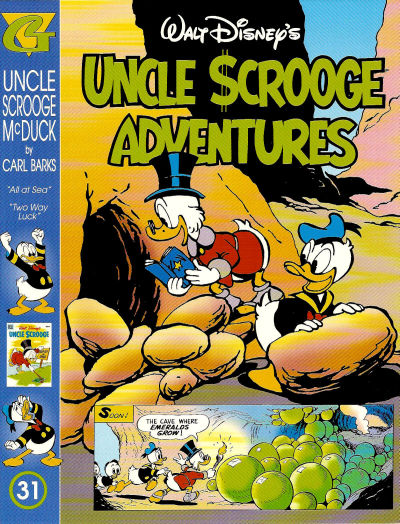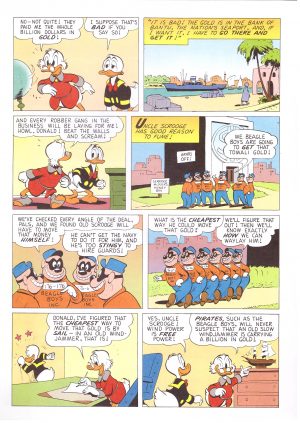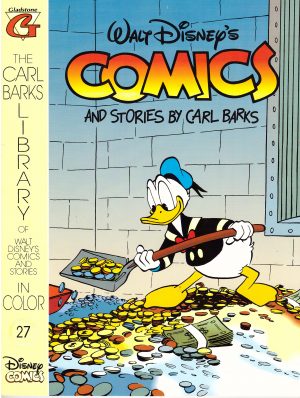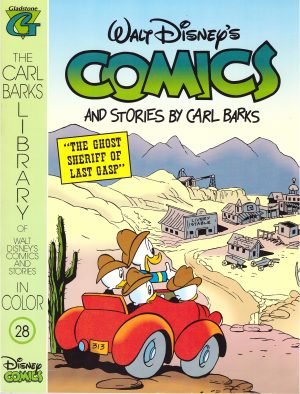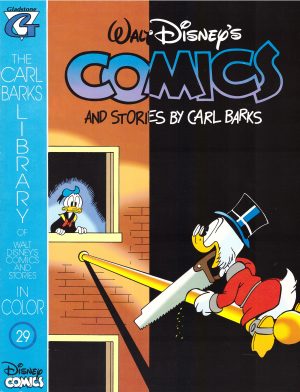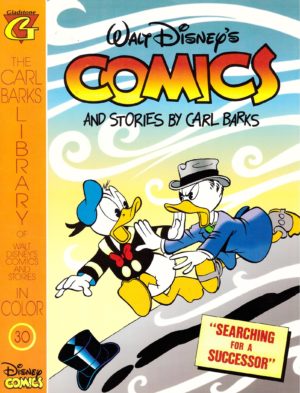Review by Frank Plowright
In 1959 and 1960 Carl Barks was in a fair nautical mood, with the inspiration for three main Uncle Scrooge stories in a run of seven coming from the sea. This time it’s the problem of transporting a billion dollars in gold from an African bank to Duckburg, Scrooge aware that every scheming crook and pirate will be attempting to rob him. It’s no surprise that the Beagle Boys are first in line, delightfully seen on the sample art lurking outside Scrooge’s money bin anticipating their robbery. As ever, Scrooge almost ensures the subsequent problems by settling on the cheapest mode of transportation as the most desirable. Barks also introduces a puzzling complication at the start. Scrooge wants Huey, Dewey and Louie to help him, but they’ve promised to raise rats for a laboratory, so the rats also have to come onboard.
Barks pulls a switch for ‘All at Sea’, because it’s usually the Beagle Boys in disguise, not recognised by Scrooge and whoever’s with him, no matter how obvious to the intended young audience. This time, however, it’s Scrooge, Donald and the boys who have to dress up, as Barks provides constant reminders of the Beagle Boys on their trail. As seen on the sample page, this is a curiously contrary Beagle Boys, sometimes menacing, their reputation having spread to foreign shores, and sometimes singing and dancing, presumably Barks’ method of making them less threatening for younger readers in 1960. While hanging the threat of the Beagle Boys over the entire story, Barks also develops the means by which Scrooge will save his fortune, because one of the consistent unwritten rules Barks applies is that the money Scrooge has he gets to keep because he earned that money. The means by which it’s saved stretches belief, but it’s funny and well signalled, if perhaps a little too obviously for adult readers.
Barks has become less expansive when it comes to drawing foreign lands. Those seen here could almost be Duckburg, but this story features some beautifully drawn silhouette panels, ranging from the old ship Scrooge uses to the Beagle Boys line dancing.
It’s rare that Barks used one of his back-up strips for a treasure hunt, but manages that in the nine pages of ‘Two Way Luck’ as Scrooge sets of in search of giant emeralds. It’s a muddled story with several surreal elements, with the generally level-headed Scrooge turned superstitious to serve its needs. It’s funny, but trivial.
Both stories are now more easily located in the 2021 Fantagraphics hardcover Uncle Scrooge: Island in the Sky.
